REMOVING THE STONE (SCALING)
SCALING - is a preventive treatment and all at the same time healing which consists in removing harsh deposits on teeth (tartar). Dental plaque not cleaned off the surface of teeth (built of nutritional remains, the bacteria and elements of saliva) undergoes the mineralization and after the certain time is being transformed into tartar. The stone traumatizes gums causing their lowering and exposing dental necks, it also contributes to processes of the disappearance of the bone of the dental process, which leads to the gradual gomphiasis and their loss (paradentitis).
It is possible to remove tartar arising in this way only in the dentist's surgery. Ultrasonic scaling is performed by a dentist. Removing the stone is performed with the help of ultrasonic scaler. The end of the scaler is applied to the surface of deposits on teeth and is introduced to them using shimmering movement with very with high frequency which causes coming off of the stone.
Ultrasonic scaling should be conducted 1-2 times a year (depending on individual's diet and patient's hygiene). A doctor determines the need to perform the treatment during the inspection of the oral cavity. The treatment isn't painful, however particularly sensitive individuals can sense little discomfort. In case of appearing of momentary oversensitivity of teeth after scaling, the doctor can conduct the treatment of varnishing which simultaneously will lower oversensitivity and at the same time will improve cleaned dental areas before the appearance of carious losses.
Scaling isn't ultrasonic recommended to persons having an implanted artificial pacemaker and to pregnant women. If the dental surgeon states the need to perform it, the treatment can be conducted using handmade tools.
Correct and regular cleaning the stone protects gums from lowering and from exposing dental necks, and above all - lowers the risk of the appearance of parodentitis and tooth loss.
The image of the dental stone by bottom incisors (from the lingual side).
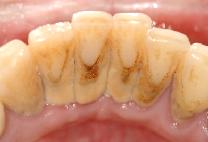
Below individual stages of the development of parodontitis caused by lying off of tartar were described
1. Missing tartar - image of healthy gums
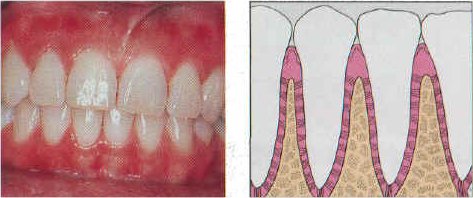
2. Presence of the dental plaque - gums turned red, swollen up. Possibility of bleeding during brushing
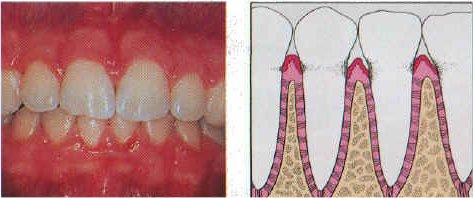
3. Presence of tartar and first phases of parodontitis - beginnings of lowering of line of gums, bleeding at brushing and spontaneous bleeding. The first manifestations of the disappearance of the bone of the alveolar process.
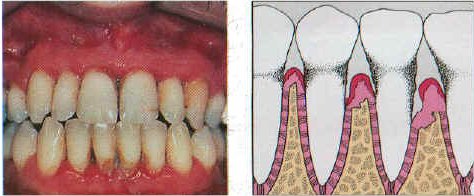
4. More distant stage of parodontitis - substantial reduction of line of gums, destroying the bone of the alveolar process. Baring of dental necks, beginnings of the gomphiasis.
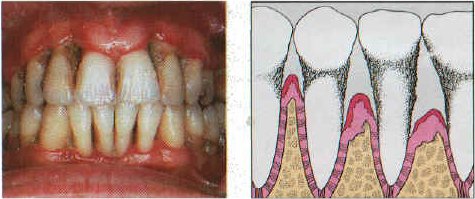
Ignoring manifestations of parodontitis causes in relatively short time considerable wobbling and loss of teeth.

.jpg)


